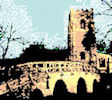The History of St. Giles' Church
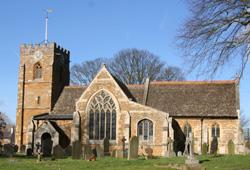
It is known that there was a church in Medbourne in the late 12th century, on the Manor held by the King. By 1220 two daughter chapels at Blaston and Holt had been established.
The circular site on which the church stands has led to conjecture that it was once moated and possibly stands on the site of an earlier pagan shrine.
The building has been so much rebuilt and restored that an accurate assessment of its history is difficult, particularly following the discovery of previously tooled stones in the South transept. There may have been a fire around 1250 as evidenced by calcination of some stones.
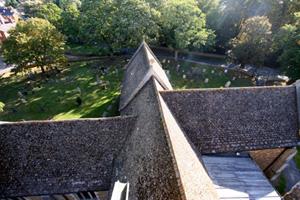
View from the tower - not a regular cruciform.
The church is not a regular cruciform design; this may have been an original design intention that was later abandoned. Consequently, the West walls of the North and South transepts do not share the same line.
A major renovation was completed in the mid 17th century. It was then that the North transept became a schoolroom and a clerestory added to the nave. Even though the Archdeacon ordered the removal of the school in 1777, it remained in church until 1869 when the new school opened, now the Village Hall.
The porch over the South door was added around 1700. By the middle of the 19th century the church had deteriorated badly. There were cracks, uneven floors, irregular pews and a fallen ceiling in the North transept. It was described as "in vile state of dirt and disorder".
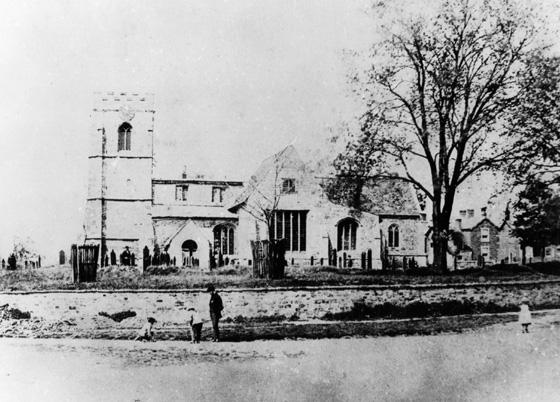
Very early photo of St. Giles showing the 17th century clerestory.
Despite this, nothing much was done until 1876 when the chancel was rebuilt, paid for by the Rev. C. F. Eastbourne. There was a delay of 4 more years before the rest of the church was rebuilt. This included rebuilding of the South aisle and the South wall and removal of the 17th century clerestory. At this time the pews were renewed and the 13th century font placed on a new stem.
During further restoration in 1911-1912 the South transept was restored, the South window was inserted and the roofs were renewed.
In 1916 the churchyard was extended by the demolition of two cottages. Following the demolition a dedication service was held in the extended graveyard; this was attended mostly by women as the men were away at war. See pictures below.
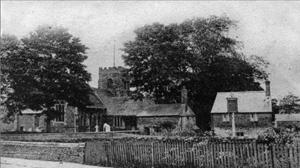
The cottages in the grounds of St. Giles.
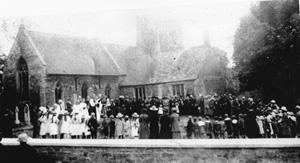
The dedication service in 1916.

The clock mechanism.
The church clock, with its unusual "two second" pendulum, was donated in 1852 by Rector L. P. Baker. In 1984 the difficult winding mechanism was electrified.
The organ was installed in 1962. Originally built in 1800 it came from Christ Church, Northampton following donation of a new organ.
The church has six bells, three dating from 1768, one from 1784, one undated and one cast in Loughborough in 1952.
A complete record of all gravestones is kept in church. The current church registers date from 1837 and Parish records date from 1588. Baptisms and marriages are almost completely recorded but 30 years' burial records are missing from 1753. There are also
several volumes of old village photographs.
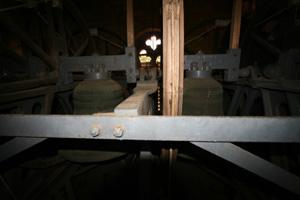
Two of the six bells.
This history is a precis of a much fuller account which is available in church as a printed leaflet.
Thanks are due to Val and David Tyler and Mick Cooper for the information and old photographs on this page. September 2011.
